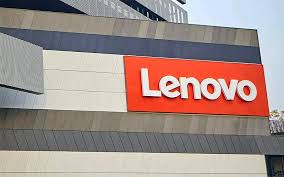
Lenovo's global operations produce both non-hazardous and small amounts of hazardous waste. To manage this waste responsibly and reduce environmental harm, Lenovo segregates these wastes at their source for proper disposal via third-party waste management services, following the guidelines in its Site Environmental Programs Manual and adhering to legal standards.
In the fiscal year 2023/24, Lenovo tracked and recorded the volumes and disposal methods of both waste types in an internal environmental database. Environmental coordinators at various sites gather monthly waste data, either measured directly or estimated based on employee numbers and historical data from comparable sites when direct measurements are not available.
The waste data for this year is detailed in Section 7.0 of Lenovo's reports, with verification statements for total waste accessible on their website.
Lenovo's Environmental Management System (EMS) mandates the reporting of environmental incidents, including those related to waste, into the database. No such incidents were reported during the last fiscal year, and manufacturing facilities undergo periodic audits which sometimes include waste management reviews. Further details on these audits can be found in Section 4.0.
Lenovo emphasizes waste management across its supply chain, requiring suppliers to comply with the Lenovo Supplier Code of Conduct and the Responsible Business Alliance (RBA) Code of Conduct, both of which cover waste management. Compliance is monitored through RBA audits, as outlined in Section 6.0.
For end-of-life product management, Lenovo operates a Product-End-of-Life Management (PELM) program, with further details in the relevant section of their documentation.
Non-hazardous Waste
This category includes office waste, cafeteria refuse, packaging, and manufacturing scraps. Lenovo sets an annual global recycling target for non-hazardous waste; for 2023/24, the goal was to recycle 90 percent (with a 5 percent margin) of this waste. Performance against these environmental goals is reported in Section 8.0.
Hazardous Waste
Lenovo produces small amounts of hazardous waste during its operations. This waste is classified as hazardous under local, regional, or national laws and can encompass items like oils, coolants, organic solvents, batteries, fluorescent tubes, and ballasts. Disposal of this waste must comply with local environmental regulations and is handled by authorized suppliers.
In the fiscal year 2023/24, Lenovo tracked and recorded the volumes and disposal methods of both waste types in an internal environmental database. Environmental coordinators at various sites gather monthly waste data, either measured directly or estimated based on employee numbers and historical data from comparable sites when direct measurements are not available.
The waste data for this year is detailed in Section 7.0 of Lenovo's reports, with verification statements for total waste accessible on their website.
Lenovo's Environmental Management System (EMS) mandates the reporting of environmental incidents, including those related to waste, into the database. No such incidents were reported during the last fiscal year, and manufacturing facilities undergo periodic audits which sometimes include waste management reviews. Further details on these audits can be found in Section 4.0.
Lenovo emphasizes waste management across its supply chain, requiring suppliers to comply with the Lenovo Supplier Code of Conduct and the Responsible Business Alliance (RBA) Code of Conduct, both of which cover waste management. Compliance is monitored through RBA audits, as outlined in Section 6.0.
For end-of-life product management, Lenovo operates a Product-End-of-Life Management (PELM) program, with further details in the relevant section of their documentation.
Non-hazardous Waste
This category includes office waste, cafeteria refuse, packaging, and manufacturing scraps. Lenovo sets an annual global recycling target for non-hazardous waste; for 2023/24, the goal was to recycle 90 percent (with a 5 percent margin) of this waste. Performance against these environmental goals is reported in Section 8.0.
Hazardous Waste
Lenovo produces small amounts of hazardous waste during its operations. This waste is classified as hazardous under local, regional, or national laws and can encompass items like oils, coolants, organic solvents, batteries, fluorescent tubes, and ballasts. Disposal of this waste must comply with local environmental regulations and is handled by authorized suppliers.


 Lenovo's 2023/24 Waste Management: Non-Hazardous & Hazardous Strategies
Lenovo's 2023/24 Waste Management: Non-Hazardous & Hazardous Strategies




 Companies
Companies